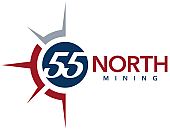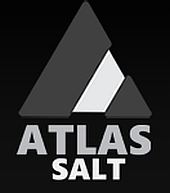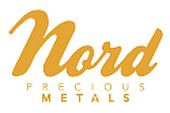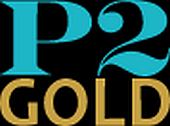 Goldshore talks sampling of historic Moss Lake core
Goldshore talks sampling of historic Moss Lake core
2022-08-23 13:11 ET – News Release
Mr. Brett Richards reports
GOLDSHORE SAMPLING OF HISTORIC CORE EXPANDS MINERALIZATION WITH 104.2M AT 1.04 G/T AU AND IDENTIFIES NEW PARALLEL ZONE
Goldshore Resources Inc. has released assay results from previously unsampled historic drill core at the Moss Lake project in Northwestern Ontario, Canada.
Goldshore’s team has retrieved historical core that remains on the Moss Lake Gold Project where the drill collars have been recovered and accurately surveyed. Prior operators selectively sampled core that fit with the model used at the time. This core is now being relogged and sampled by Goldshore. This presents an excellent, cost-effective opportunity for Goldshore to generate significant results without new drilling, particularly in those holes that coincide with Goldshore’s identified targets. This news release presents results from six such historical holes where sampling by prior operators was incomplete.
Highlights:
Sampling of unsampled sections of two historic drill holes at the QES Zone have increased the width and grade of gold mineralization over that previously reported. The expanded intercepts include:
104.2m @ 1.04 g/t Au from 422.0m in NS247, including
19.40m @ 2.66 g/t Au from 458.6m
This section includes the visible gold reported on April 19, 2022
The hole ended in mineralization
56.1m @ 0.42 g/t Au from 493.5m in NS248
Sampling has also identified a new southern parallel zone that was previously unrecognized, including:
9.30m @ 1.28 g/t Au from 244.6m depth, including
0.9m @ 10.95 g/t from 253.0m
0.9m @ 35.7 g/t Au from 271.65m and
78.45m @ 0.35 g/t Au from 331.55m in NS247
69.10m @ 0.49 g/t Au from 413.0m in NS248
Additional sampling of four drillholes assessing regional prospects confirmed initial results.
President and CEO Brett Richards stated: “All of the work we have conducted at Moss Lake, whether new drilling results or sampling and analysis of the historic drilling, all indicates that the extent of mineralization is far greater than the footprint of the historical resource. These results indicate yet another parallel zone of mineralization not previously identified and will provide new high quality drill targets in the future; as well as meaningful data when conducting the resource estimation.”
Technical Overview
 |
Results have been received for six historical holes that were incompletely sampled in the past and have now been more completely sampled to fully assess the intersected mineralized zones. Two holes (NS247 and NS248) targeted the QES Zone and four holes (ML-02-006, ML-04-016, ML-04-017, and ML-04-018) tested regional prospects south of the Moss Lake Project.
Assays from new sampling at NS247 and NS248 have expanded the widths of the known mineralized intercepts and identified a new parallel zone to the south of QES. They show that gold mineralization at Moss Lake is wider than previously believed and contains additional higher-grade structures beyond that defined by historic drilling. Step back drilling of the QES Zone has begun to determine the extent of the new parallel zones south of the QES Zone.
The broad zone of 104.2m @ 1.04 g/t Au from 422.0m in NS247 compares to an historic interval of 104.2m @ 0.88 g/t Au if the unsampled intervals are assigned zero grade, which seems to be what previous geologists thought. Similarly, the interval 56.1m @ 0.42 g/t Au from 493.5m in NS248 compares to an historic interval of 56.1m @ 0.31 g/t Au.
The high-grade section of NS247(19.40m @ 2.66 g/t Au from 458.6m) includes a narrow quartz-pyrite-chalcopyrite vein zone with visible gold that was reported on April 19, 2022. Surprisingly, this interval returned only 0.3m @ 1.01 g/t Au from 546.8m highlighting the nuggetty nature of gold mineralization. The drill hole ended in gold mineralization suggesting that the mineralized zone is wider.
Infill sampling of ML-04-016 and ML-04-018 yielded minor increases to the width of historic intercepts. No additional mineralized zones were identified in any of the four holes.
Several additional holes have been identified as having unsampled intervals within mineralized drill core. Historical core archives are being reexamined to locate, identify, and recover drill core for further infill sampling.
Pete Flindell, VP Exploration for Goldshore, said “These drill results confirm our contention that previous explorers did not assess the full scale of gold mineralization at Moss Lake. As such, Moss Lake holds significant potential to be a larger gold system. Our assessment of historic drill core will continue in parallel with our 100,000-meter drill program.”
Analytical and QA/QC Procedures
All samples were sent to ALS Geochemistry in Thunder Bay for preparation and analysis was performed in the ALS Vancouver analytical facility. ALS is accredited by the Standards Council of Canada (SCC) for the Accreditation of Mineral Analysis Testing Laboratories and CAN-P-4E ISO/IEC 17025. Samples were analyzed for gold via fire assay with an AA finish (“Au-AA23”) and 48 pathfinder elements via ICP-MS after four-acid digestion (“ME-MS61”). Samples that assayed over 10 ppm Au were re-run via fire assay with a gravimetric finish (“Au-GRA21”).
In addition to ALS quality assurance / quality control (“QA/QC”) protocols, Goldshore has implemented a quality control program for all samples collected through the drilling program. The quality control program was designed by a qualified and independent third party, with a focus on the quality of analytical results for gold. Analytical results are received, imported to our secure on-line database and evaluated to meet our established guidelines to ensure that all sample batches pass industry best practice for analytical quality control. Certified reference materials are considered acceptable if values returned are within three standard deviations of the certified value reported by the manufacture of the material. In addition to the certified reference material, certified blank material is included in the sample stream to monitor contamination during sample preparation. Blank material results are assessed based on the returned gold result being less than ten times the quoted lower detection limit of the analytical method. The results of the on-going analytical quality control program are evaluated and reported to Goldshore by Orix Geoscience Inc.
About Goldshore
Goldshore is an emerging junior gold development company, and owns the Moss Lake Gold Project located in Ontario. Wesdome is currently a large shareholder of Goldshore with an approximate 27% equity position in the Company. Well-financed and supported by an industry-leading management group, board of directors and advisory board, Goldshore is positioned to advance the Moss Lake Gold Project through the next stages of exploration and development.
About the Moss Lake Gold Project
The Moss Lake Gold Project is located approximately 100 km west of the city of Thunder Bay, Ontario. It is accessed via Highway 11 which passes within 1 km of the property boundary to the north. The Moss Lake Gold Project covers 14,292 hectares and consists of 282 unpatented and patented mining claims.
The Moss Lake Gold Project hosts a number of gold and base metal rich deposits including the Moss Lake Deposit, the East Coldstream Deposit (Table 3), the historically producing North Coldstream Mine (Table 4), and the Hamlin Zone, all of which occur over a mineralized trend exceeding 20 km in length. A historical preliminary economic assessment (the “Moss Lake Historical Estimate”) was completed on the Moss Lake Gold Project in 2013 and published by Moss Lake Gold Mines Ltd. (“Moss Lake Gold Mines”)1,3. A historical mineral resource estimate (the “East Coldstream Historical Estimate”) was completed on the East Coldstream Deposit in 2011 by Foundation Resources Inc.2,3 In addition to these zones, the Moss Lake Gold Project also hosts a number of under-explored mineral occurrences which are reported to exist both at surface and in historically drilled holes. The Moss Lake Deposit is a shear-hosted disseminated-style gold deposit which outcrops at surface. It has been drilled over a 2.5 km length and to depths of 300 m with 376 holes completed between 1983 and 2017. The last drilling program conducted in 2016 and 2017 by Wesdome Gold Mines Ltd. (“Wesdome”), which consisted of widely spaced holes along the strike extension of the deposit was successful in expanding the mineralized footprint and hydrothermal system 1.6 km to the northeast. Additionally, the deposit remains largely open to depth. In 2017, Wesdome completed an induced polarization survey which traced the potential extensions of pyrite mineralization associated with the Moss Lake Deposit over a total strike length of 8 km and spanning the entire extent of the survey grids.
The East Coldstream Deposit is a shear-hosted disseminated-style gold deposit which locally outcrops at surface. It has been drilled over a 1.3 km length and to depths of 200 m with 138 holes completed between 1988 and 2017. The deposit remains largely open at depth and may have the potential for expansion along strike. Historic drill hole highlights from the East Coldstream Deposit include 4.86 g/t Au over 27.3 m in C-10-15.
The historically producing North Coldstream Mine is reported to have produced significant amounts of copper, gold and silver4 from mineralization with potential iron-oxide-copper-gold deposit style affinity. The exploration potential immediately surrounding the historic mining area is not currently well understood and historic data compilation is required.
The Hamlin Zone is a significant occurrence of copper and gold mineralization, and also of potential iron-oxide-copper-gold deposit style affinity. Between 2008 and 2011, Glencore tested Hamlin with 24 drill holes which successfully outlined a broad and intermittently mineralized zone over a strike length of 900 m. Historic drill hole highlights from the Hamlin Zone include 0.9 g/t Au and 0.35% Cu over 150.7 m in HAM-11-75.
The Moss Lake, East Coldstream and North Coldstream deposits sit on a mineral trend marked by a regionally significant deformation zone locally referred to as the Wawiag Fault Zone in the area of the Moss Lake Deposit. This deformation zone occurs over a length of approximately 20 km on the Moss Lake Gold Project and there is an area spanning approximately 7 km between the Moss Lake and East Coldstream deposits that is significantly underexplored.
 |
Peter Flindell, P.Geo., MAusIMM, MAIG, Vice President – Exploration of the Company, a qualified person under NI 43-101 has approved the scientific and technical information contained in this news release.
We seek Safe Harbor.
https://goldshoreresources.com/




























